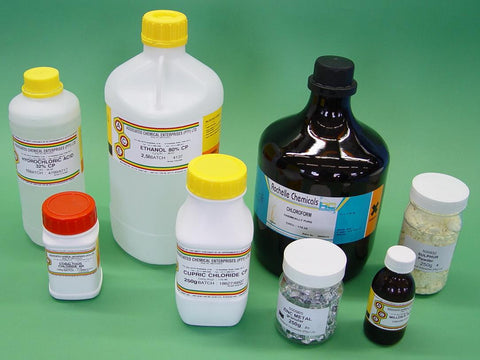
AGAR AGAR POWDER 250g
Agar is pronounced awger (sounds like fogger without the f). Agar is a gelling agent extracted from red seaweed. Nutrient agar is a commonly used food medium for microbial cultures. Nutrient agar contains: o beef extract (provides carbohydrates, nitrogen, vitamins, salts) o peptone (helps control pH) o agar (a carbohydrate used as a solidifying agent) o distilled water (an agent for distributing food materials to growing colonies of micro-organisms) Materials: Agar Powder distilled water flask or beaker glass stir rod lab thermometer sterile Petri dishes (plastic) flame or boiling mixture heat resistant hand protection NOTE: Keep sterile Petri dishes closed until ready to pour agar into them. Air-borne contaminants can easily invade an open Petri dish. Procedure: 1. Measure agar and distilled water into clean flask or beaker. Recipe: Agar + Distilled Water = Yield Agar + Distilled Water = Yield 23 g 1000 ml 50 plates 11.5 g 500 ml 25 plates 9.2 g 400 ml 20 plates 4.6 g 200 ml 10 plates 2. Flame sterilize a clean glass stir rod to stir the medium as it melts. 3. While wearing heat resistant hand protection, hold the flask or beaker over the flame. Swish or stir the mixture constantly while heating. 4. Boil the mixture for 1 minute. Remove from heat. 5. Place a sterile lab thermometer. in the mixture and monitor the temperature until it falls to approximately 45 - 50° C or if a lab thermometer is not available, cover and let stand a few minutes. 6. Pour enough melted agar into each sterile plastic petri dish to cover the bottom - about 3mm to 6mm deep. Replace the lid immediately. 7. Place agar plates on a counter top to cool and set. Agar medium will set like stiff gelatin at room temperature. 8. The agar medium is now ready for storage or use. Storage: Stack agar plates upside down in the refrigerator. Do Not Freeze! The purpose of placing the plates upside down is to prevent condensation from dripping down onto the agar surface which could then facilitate movement of organisms between colonies. Preparing the Plates 1. If plates have been refrigerated, set them out and allow them to warm to room temperature. 2. Sterilize the loop o To sterilize the loop, hold the handle with a pot holder and place the tiny looped wire in a flame until it turns bright red o Allow the loop to cool for 3 - 5 seconds before touching the collection area. o Resterilize the loop after each inoculation. o Do not allow the loop to touch any surface other than the collection area and the agar. 3. Uncover each agar plate just long enough to inoculate the medium. hold the petri dish lid directly over the petri dish (or tilt the lid just enough to allow the loop inside) while inoculating the medium to help prevent contamination from air-borne particles. Do not allow the loop to touch the petri dish. 4. Do not dip the loop in the agar; let it glide over the surface. 5. Make a pattern of inoculation lines (parallel lines, tic-tac-toe, zig-zag, initials, etc.) to help determine that what is growing is what you put there and not an air-borne contaminant. 6. Place the cover back on the plate immediately. Incubation: Turn the plates upside down and put them in a warm place. The ideal temperature for incubation is 32° C or 90° F. Bacterial growth should start to become visible in about 2 -3 days.


